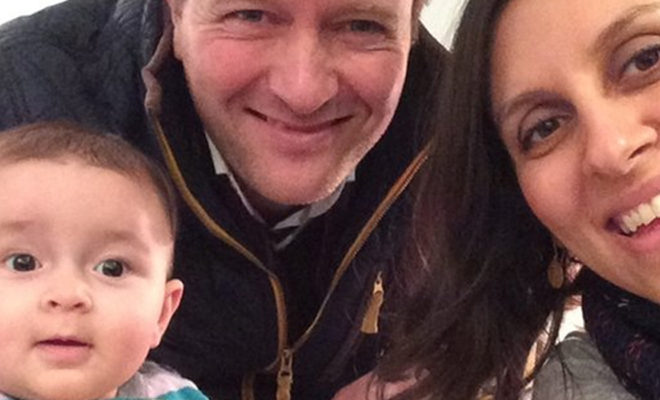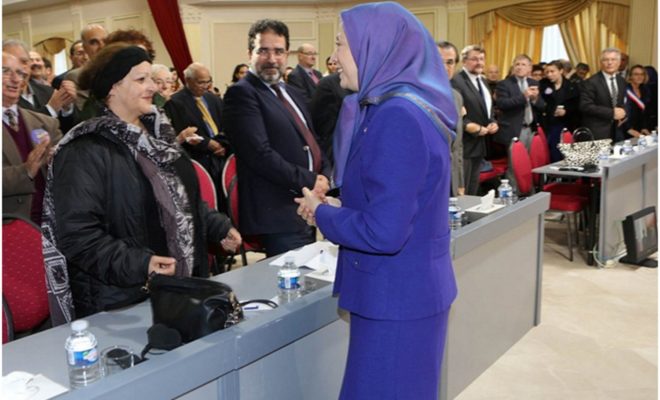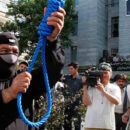Policymakers Beware: Tehran Takes Hostages to Manipulate

Dr. Majid Sadeghpour
July 25, 2017
In recent days, a number of lawmakers have asked the Trump administration to convince Iran to release American citizen Bob Levinson, who intelligence agencies believe the Islamic Republic is secretly holding. Lost in the oft-repeated diplomatic struggles to “engage” Iran on the issue is the fact that “the Islamic Republic has quietly arrested more Americans since the nuclear deal went into effect” in 2015, continuing a strategy that has benefited it immensely.
Iran’s habitual ballet of illegal detentions of foreign nationals began with the takeover of the U.S. Embassy in Tehran in 1979. For nearly 4 decades since, the clerical regime has continued to use this unlawful tactic.
Karan Vafadari, Gholamreza Shahini, Jason Rezaian, Nazanin Zaghari-Ratcliffe, Bob Levinson, and Pastor Saeed Abedini are among the more recent examples of Americans or dual citizens detained by Iran. Ms. Zagari-Ratcliffe and Mr. Levinson remain in Iranian regime custody on bogus charges.
In 2015, relatives of Amir Hekmati, an Iranian-American Marine veteran, who at the time was incarcerated in Iran for more than three and a half years, sent a letter to congressional leaders, “dictated by him over the phone from prison, denouncing what he called Iran’s serial hostage-taking and demanded tougher pressure on the Iranian authorities.” On January 16, 2016, only days after the nuclear deal wen into effect, Mr. Hekmati was released and allowed to leave Iran as part of a prisoner exchange between the U.S. and Iran.
Mr. Hekmati’s characterization of Iranian rulers as serial hostage takers, his entire ordeal, and the means of his release aptly summarize the regime’s aims and its methods. With these recurring scenarios, the clerics of Iran heartlessly play with the lives of innocent civilians and their families. They also hold hostage respective governments who seek safe return of their citizens. Ultimately, Iran’s hostage taking has bullied liberal democracies into tilting their foreign policies in its favor.
Tehran inhumanely recorded and publicized a video of Mr. Levinson pleading: “Thirty-three years of service to the United States deserves something. Please help me.” In January 2016, American people were outraged to see Iranian photos and videos showing sailors being held at gunpoint by the Islamic Revolutionary Guard Corps (IRGC). In detaining U.S. servicemen and perverting diplomatic processes while the President of the United States delivered his State of the Union address, the theocratic regime demanded a U.S. “apology.”
A day later, IRGC said that they released the sailors after they reached the conclusion that the “illegal entry into Iranian water was not the result of a purposeful act.” Then-Secretary of State John Kerry expressed his “gratitude to Iranian authorities for their cooperation in quickly resolving this matter.” Missing in the ensuing discourse was the troubling fact that just days earlier Iran had conducted a dangerous and provocative missile test close to U.S. Navy vessels in the Persian Gulf.
For years, ransom payments and political concessions to Iran have been the standard by western governments, further emboldening and encouraging the regime. In the early 1980s, Hezbollah, which today is a direct branch of the IRGC and orchestrates the Syrian battlefield for Iran, took several Americans hostage in Lebanon. In 1984, the U.S. administration began what it had hoped was an opening to Iranian mullah “moderates” (sound familiar?). “Eventually, that secret diplomacy turned into a deal to exchange anti-tank missiles from Israel for the release of hostages in Lebanon.”
The Lebanon kidnappings of the 1980’s demand further exploration. Though the hostages were mostly Americans, French and other Western European countries were not immune. At least eight hostages died in captivity; murdered or from lack of adequate medical attention. Testimony of former hostages indicate that almost all hostage takers were men coming from various clans within Hezbollah and were led by Imad Mughniyah, an IRGC-affiliated operator.
Then-French Prime Minister Jacques Chirac also struck a deal with Tehran for the release of French hostages. In exchange, the 1986 deal included forcing Iran’s largest opposition group, the Mujahedin-e Khalq (MEK), to leave France. Investigative journalist Dominique Lorentz called the 1986 capture of French hostages an act of blackmail.
Rep. Ted Deutch (D-FL) said recently That Levinson “was not part of the 2016 deal that saw five American citizens released from Iran,” adding that, “as part of that deal, commitments were made by Iran to assist in Bob’s case.” Iranian operatives have thus toyed with the kidnapped, their families, and the governments who wish to bring the hostages back home to their loved ones.
Yet American universities are still allowed to recklessly sponsor student trips to Iran; facilitating their detention or mistreatment. This practice must stop and Iranian regime treated as is: The number one state sponsor of terror and a regime that executes more people per capita than any other nation in the world.
Defense Secretary Jim Mattis is correct in asserting that “for all the talk of ISIS and Al Qaeda everywhere right now,…nothing is as serious…in terms of stability and prosperity and some hope for a better future for the young people out there than Iran.”
Allowing the Iranian regime to use hostage taking and blackmail for geopolitical gains has certainly helped turn the regime into what General Mattis has called “the single most enduring threat to stability and peace in the Middle East.” Enough is enough.
Dr. Sadeghpour is Political Director for Organization of Iranian American Communities (OIAC)









